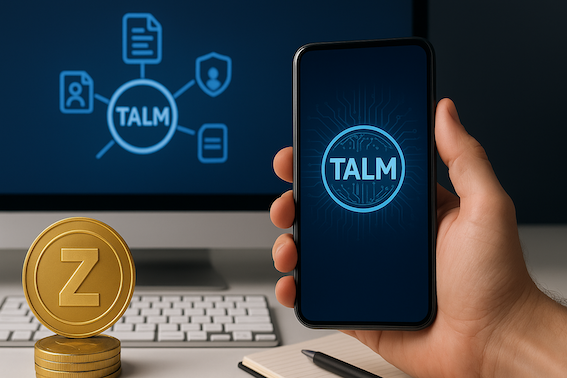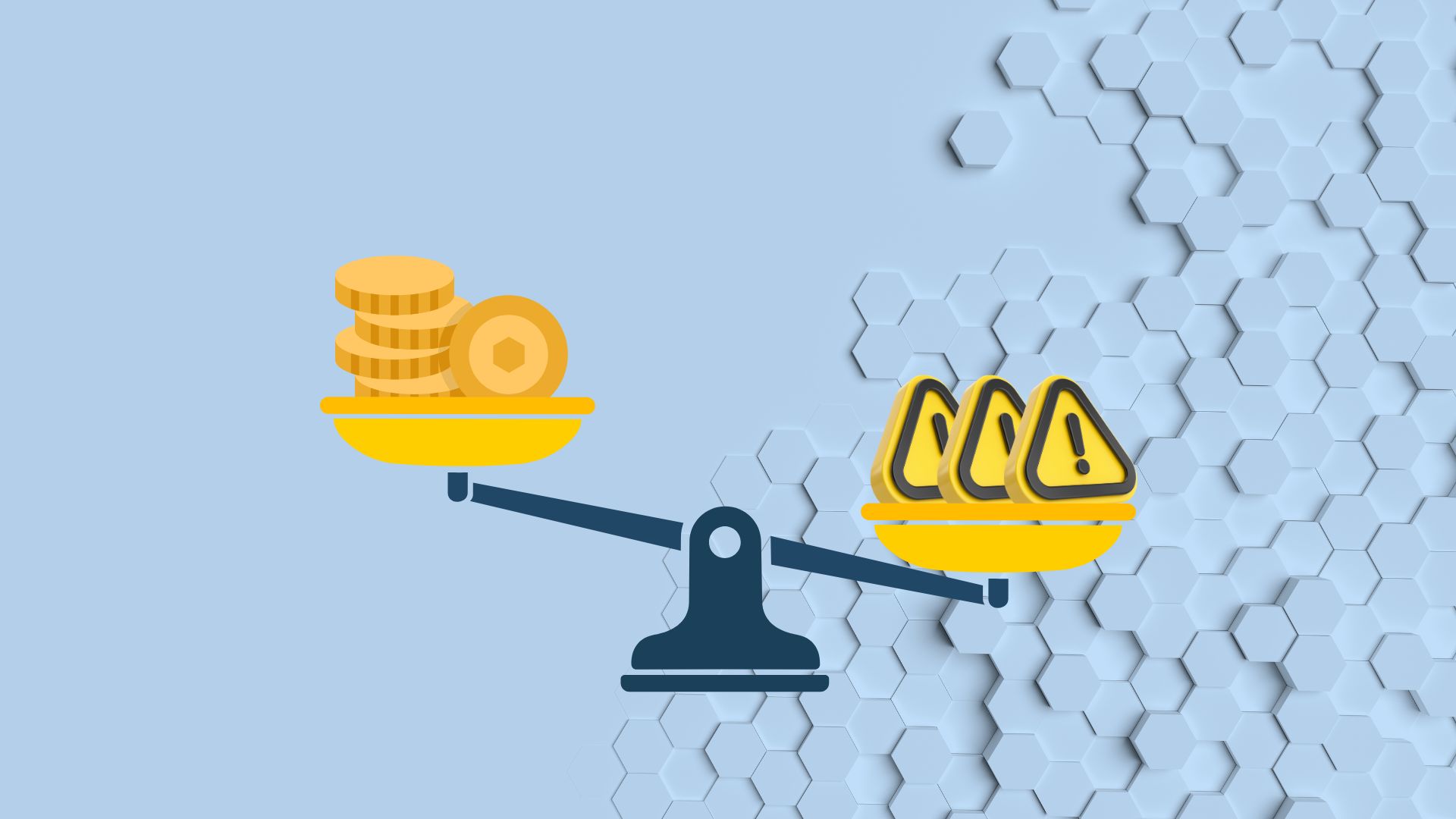Tokenizing Agriculture: Unlocking Liquidity, Transparency, and Sustainable Growth in Farming
1. Introduction
2. What Is Agricultural Tokenization?
- Definition of agricultural tokenization and its core components (tokenizing crops, farmland, equipment, carbon credits, etc.).
- How blockchain, smart contracts, and fractional ownership work in this context.
3. Key Benefits of Tokenizing Agriculture
- Access to Capital: Micro-investments in farms, crowdfunded agricultural projects.
- Liquidity for Illiquid Assets: Farmland, equipment, or harvest futures.
- Transparency and Traceability: Farm-to-fork tracking, supply chain visibility.
- Sustainability and Carbon Credits: Tokenized environmental outcomes.
- Financial Inclusion for Farmers: Especially in developing economies.
4. Use Cases and Global Projects
- Africa: Financial Inclusion Through Tokenized Farming
- India: Digitizing Land and Yield-Based Financing
- Europe: ESG Investing and Carbon Tokenization
- LATAM: Tokenized Farmland and DeFi Integration
5. Challenges and Considerations
- Regulatory complexity in agricultural finance.
- Farmer adoption barriers and tech literacy.
- Price volatility of tokenized commodities.
- Infrastructure and interoperability issues.
6. The Role of Infrastructure Providers like Zoniqx
7. Conclusion
1. Introduction
Agriculture has been the backbone of human civilization over centuries, nourishing people, powering economies, and supporting livelihoods worldwide. Yet, despite its fundamental role, the industry remains riddled with inefficiencies: limited access to capital, unstructured supply chains, opaque pricing systems, and low investor participation. These issues have reached an extreme in developing nations, where smallholder farmers often lack the fiscal tools and infrastructure to grow optimally.
Enter tokenization, a groundbreaking application of blockchain technology that has the potential to transform farming from the ground up. Tokenizing agricultural assets such as crops, land, equipment, and carbon credits allows participants to unlock previously unimaginable levels of liquidity, transparency, and accessibility. From enabling fractional ownership of farmland to tracking produce along global supply chains, tokenization has the potential to democratize farming, close capital gaps, and enhance sustainability.
This article explores how tokenization is transforming agriculture, the real world use cases emerging globally, and how to increase adoption, especially via compliant, secure, and end-to-end technology solutions and platforms.
2. What Is Agricultural Tokenization?
Agricultural tokenization refers to the process of converting real-world agricultural assets, such as crops, farmland, machinery, and even environmental outcomes like carbon credits, into digital tokens stored and managed on a blockchain. These tokens represent ownership rights, revenue shares, or usage entitlements, and can be traded, sold, or used as collateral, thereby transforming traditionally illiquid and undervalued assets into investable instruments.
At its core, tokenization leverages blockchain technology to ensure transparency, traceability, and security. Smart contracts, which are self-executing agreements coded on the blockchain, automate processes like revenue distribution, lease execution, and milestone-based payments. For example, a smart contract could automatically release funds to a farmer once a harvest reaches a predefined yield or quality threshold, reducing reliance on intermediaries and minimizing payment delays.
Fractional ownership is another transformative feature. Instead of requiring large capital to buy an entire farm or equipment, investors can purchase small fractions via tokens. This opens agricultural investment to a broader pool of stakeholders, including retail investors and impact funds, while providing farmers with faster and more flexible access to capital.
Moreover, carbon credit tokenization allows farms practicing sustainable agriculture to monetize their environmental impact. By issuing verifiable, blockchain-based carbon tokens, these farms can tap into global ESG investment flows.
3. Key Benefits of Tokenizing Agriculture
Tokenization of agriculture assets opens a range of opportunities that address some of the sector's biggest challenges. Ranging from opening new channels for capital to making farming more transparent, sustainable, and inclusive, tokenization has the capacity to bring agriculture into the modern era in a way that is both scalable and equitable.
3.1 Access to Capital: Crowdfunding the Future of Farming
Agriculture is notoriously capital intensive, but farmers, especially smallholders, often have limited access to credit due to poor documentation, high risk of default, or physical inaccessibility. Tokenization opens the doors to micro-investments, which allow people and institutions to fund farming projects through crowdfunded tokens.
For example, a Kenyan farmer can tokenize some of their maize crop and raise capital from global investors in exchange for an equity proportionate to the returns they get from selling the future crops. This strategy reduces reliance on traditional lenders and shortens funding cycles. Such tokenized funding models are already being tested by existing platforms to bring agriculture into the digital finance era.
3.2 Liquidity for Illiquid Assets
Assets like equipment, harvest futures, and land traditionally are illiquid, as they are difficult to divide, trade, or convert to cash quickly. Tokenization solves that problem by creating fractional, tradable digital units of ownership.
For instance, if a 100-acre farm is represented by 1,000 tokens, a 10-token buy by an investor equals 1 acre of ownership or profit participation. The tokens can be resold on secondary markets or used as collateral, enhancing liquidity and converting agriculture into a more liquid asset class for investors.
3.3 Transparency and Traceability: From Farm to Fork
Supply chain transparency is one of the major challenges in agriculture, leading to wastage, fraud, and consumer disillusionment. With tokenized assets regulated via blockchain, every stage, from sowing to harvest, packaging, and distribution, can be tracked immutably.
This offers full traceability, reassuring final consumers about food origin, organic classification, or equity of labor. For instance, a token of chocolate on the blockchain might include GPS farm coordinates, date of harvest, transit history, and CO₂ footprint, creating a verifiable "digital passport" for every unit of crop.
3.4 Sustainability and Carbon Credits
Sustainability efforts often go undercompensated in farming. Through tokenization, farms can monetize regenerative practices by issuing carbon or biodiversity tokens. These represent measurable environmental outcomes like CO₂ sequestration or soil restoration and can be sold on carbon markets. Several projects are enabling farmers to tokenize environmental assets, giving them financial incentives to adopt climate-smart agriculture and attract ESG-conscious investors.
3.5 Financial Inclusion for Farmers in Developing Economies
Tokenization can democratize agricultural finance by connecting unbanked or underbanked farmers with global capital and services. With just a smartphone and internet access, a farmer can issue tokens, attract investors, insure their crops, or access loans, all without stepping into a bank.
This is particularly impactful in Africa, South Asia, and Latin America, where mobile-first tokenization platforms are lowering entry barriers and accelerating rural economic inclusion.
Together, these benefits position tokenization as a catalyst for a more resilient, inclusive, and tech-enabled agricultural future.
4. Use Cases and Global Projects
Across the globe, tokenization is no longer a theoretical concept; it is actively being deployed to solve real-world agricultural challenges. From Africa to Europe and Latin America, innovative projects are using blockchain-based tokens to boost liquidity, traceability, and farmer empowerment.
4.1 Africa: Financial Inclusion Through Tokenized Farming
In many parts of Africa, smallholder farmers lack access to basic financial services. Tokenization is helping bridge this gap. For instance, in Kenya and Ghana, tokenization is enabling farmers to convert their harvests into tokens, granting them access to early-stage capital from global investors.
A 2024 Cointelegraph report highlights a cocoa farming initiative in Ghana where each batch of cocoa is tracked on-chain using NFTs and fractional tokens. This has improved supply chain transparency and allowed small farms to earn premium prices by proving their adherence to organic and fair-trade standards.
4.2 India: Digitizing Land and Yield-Based Financing
In India, land ownership is often difficult to verify, which hampers farm-level investment. Some projects are using tokenization to digitize land records and create fractional investment models for agricultural production.
According to Rejolut (2024), tokenized harvest futures in India are allowing cooperatives to raise working capital by issuing digital tokens backed by expected crop yields. These tokens are then traded among investors who receive returns post-harvest, making agricultural finance more predictable and scalable.
4.3 Europe: ESG Investing and Carbon Tokenization
Europe is leading the way in ESG-aligned agricultural tokenization, with a strong focus on sustainability. Several platforms are working with EU farms to tokenize carbon sequestration data. Farmers practicing regenerative agriculture receive carbon tokens they can sell on voluntary carbon markets, creating a financial incentive to adopt climate-positive practices.
A study by Wageningen University (2024) observed that such projects not only reduced emissions but also attracted ESG investors looking for transparent, verifiable green impact.
4.4 LATAM: Tokenized Farmland and DeFi Integration
In Latin America, particularly Brazil and Argentina, some platforms are allowing farmers to tokenize soy, corn, and wheat. These commodity-backed tokens are used for loans, payments, and collateral in decentralized finance (DeFi) applications.
Agrotoken reports over $50 million in tokenized crop-backed assets to date, enabling farmers to bypass volatile currency exchanges and secure credit at better rates.
These global use cases prove that agricultural tokenization is not a one-size-fits-all model; it is a flexible framework that adapts to regional needs, infrastructure maturity, and investor appetite.
5. Challenges and Considerations
While the potential for agricultural tokenization is high, its real-world success is limited by numerous practical challenges. Overcoming these challenges will be critical to transition from pilot to large-scale deployment.
5.1 Legal Complexity in Farm Finance
Farming and finance are two of the most heavily regulated sectors in most countries, and merging them on blockchain introduces layers of legal complexity. Land titles, securities, and commodity regulation vary markedly across jurisdictions.
For instance, tokenized farming can be treated as a security in some jurisdictions, which entails compliance requirements under financial regulation. Moreover, cross-border investing in agricultural tokens may involve foreign ownership restrictions and ambiguous tax treatment.
Without clear legal frameworks, institutional investors remain hesitant, and platforms may face operational risk or legal penalties.
5.2 Tech Literacy and Farmer Adoption
The majority of farmers who will benefit the most from tokenization, especially in emerging economies, are also the least equipped to do so. Limited digital literacy, lack of access to the internet, and mistrust of advanced financial instruments hinder adoption.
Even with ubiquitous smartphone use, the ability to issue, manage, or trade digital tokens is typically dependent on intermediary support. Some projects were able to succeed by building pared-down, mobile-optimized interfaces and offering training, but scaling this education to tens of millions of farmers is a substantial problem.
5.3 Price Volatility of Tokenized Commodities
Tokenization of farm output adds a further level of volatility. Crop prices are already volatile due to weather, disease, and overseas demand. When these types of assets are tokenized and traded online, price volatility may be amplified through speculation, lack of liquidity, or manipulation on decentralized exchanges.
This volatility may increase the difficulty of planning revenues for farmers or cynicism among retail investors who are unaware of farm cycles.
5.4 Infrastructure Gaps and Interoperability
Tokenization is dependent on robust digital infrastructure, including blockchain platforms, mobile access, secure wallets, oracles for real-world data, and compliant custodial services. In many rural areas, this infrastructure is either absent or underdeveloped.
In addition, the absence of interoperability among tokenization platforms, national land registries, and payment systems creates friction. In the absence of end-to-end integration, the lifecycle of tokenized assets, from issuance to trade to settlement, is still fragmented.
These are not insurmountable barriers, but they will require coordinated effort from governments, technology companies, cooperatives, and investors. Building trust, designing localized solutions, and pushing for regulatory clarity will be key to unlocking agriculture’s tokenized future.
6. The Role of Infrastructure Providers like Zoniqx
Bringing agricultural assets onto the blockchain isn’t just about issuing tokens; it requires a secure, compliant, and interoperable infrastructure that can handle the entire asset lifecycle. This is where platforms like Zoniqx play a critical enabling role.
Zoniqx offers end-to-end tokenization infrastructure that supports everything from secure asset onboarding and regulatory compliance to lifecycle management and secondary market access. For agricultural projects, this means farms, cooperatives, or agri-fintech platforms can tokenize land, harvests, or environmental credits with built-in tools for governance, investor rights, reporting, and automation.
By offering a modular architecture that integrates with oracles, legal frameworks, and payment rails, Zoniqx enables seamless connectivity between blockchain networks and real-world systems. This makes it easier for governments, agritech startups, and cooperatives to design and launch tokenized products that are both scalable and legally sound.
For agriculture to truly benefit from tokenization, it needs infrastructure providers that understand compliance, security, and flexibility at scale. Platforms like Zoniqx are helping turn visionary use cases into operational realities, paving the way for more inclusive, transparent, and investable food systems.
7. Conclusion
Tokenization offers a powerful new lens through which to reimagine agriculture, not just as a tradition-bound industry, but as a dynamic ecosystem of digitized assets, data-driven decisions, and global participation. By unlocking capital, improving transparency, and incentivizing sustainable practices, tokenization can reshape how farms are funded, how food is traced, and how farmers are empowered.
But meaningful adoption will require more than just technology. It demands collaboration between governments, cooperatives, tech providers, and investors to build infrastructure, navigate regulation, and educate stakeholders at every level.
As agriculture confronts growing challenges, from climate risk to food insecurity, tokenization offers a timely and scalable solution. For platforms, policymakers, or agribusiness leaders exploring what’s next, now is the moment to lay the groundwork.
Zoniqx stands ready to support this transition with compliant, flexible tokenization infrastructure, helping turn promising concepts into high-impact agricultural innovation.
References
- Antier Solutions. (2024). Ignoring Agriculture Tokenization Could Cost You Millions – Here’s Why. Retrieved from https://www.antiersolutions.com/blogs/ignoring-agriculture-tokenization-could-cost-you-millions-here-is-why
- Blockchain App Factory. (n.d.). Crop Tokenization: A New Chapter in Agricultural Investment. Retrieved from https://www.blockchainappfactory.com/blog/crop-tokenization
- Cointelegraph Magazine. (2024). Tokenization Projects Transforming Farmers’ Lives in Africa. Retrieved from https://cointelegraph.com/magazine/tokenization-projects-transforming-farmers-lives-africa
- Forbes Business Council. (2024). Using Tokenization of Agriculture to Address Broken Food Supply Chains. Retrieved from https://www.forbes.com/councils/forbesbusinesscouncil/2024/07/05/using-tokenization-of-agriculture-to-address-broken-food-supply-chains
- Rejolut. (2024). Tokenization of Agro Commodities. Retrieved from https://rejolut.com/blog/tokenization-of-agro-commodities
- ResearchGate – Tarhini, M. (2022). Application of Asset Tokenization, Smart Contracts, and Decentralized Finance in Agriculture. Retrieved from https://www.researchgate.net/publication/359405881
- ResearchGate – Tokenization and Agriculture. (2024). Unlocking Liquidity, Transparency and Sustainability. Retrieved from https://www.researchgate.net/publication/393229320
- RWA.xyz. (2024). The Future of Agricultural Assets Through Tokenization. Retrieved from https://www.rwa.io/post/the-future-of-agricultural-assets-through-tokenization
- SSRN. (2024). Application of Asset Tokenization, Smart Contracts, and DeFi in Agriculture. Retrieved from https://papers.ssrn.com/sol3/papers.cfm?abstract_id=5162642
- Token Launchpad EU. (2024). Tokenization in Farming. Retrieved from https://tokenlaunchpad.eu/2024/03/tokenization-in-farming
- UNWE – International Conference Paper. (2024). Tokenization in Agriculture: An Emerging Fintech Solution. Retrieved from https://www.unwe.bg/doi/iited/2024/IITED.2024.08.pdf
- Wageningen University & Research (WUR). (2024). Blockchain Applications in Agricultural Value Chains. Retrieved from https://edepot.wur.nl/632096
Disclaimer
This article is for informational purposes only and does not constitute legal, financial, or regulatory advice. References to SEC are based on public statements and do not imply endorsement or legal interpretation. Readers are encouraged to consult with legal or regulatory professionals before engaging in asset tokenization. Zoniqx operates in full compliance with applicable laws and supports regulatory clarity in the tokenization ecosystem.
About Zoniqx
Institutional-Grade, Secure, and Future-Ready AI-Powered Multi-Chain Technology for Real-World Asset Tokenization
Zoniqx ("Zoh-nicks") is a global fintech leader headquartered in Silicon Valley, specializing in converting real-world assets into Security Tokens. Zoniqx leverages cutting-edge AI-driven multi-chain technology to enable seamless, secure, and regulatory-compliant RWA tokenization. Their platform integrates advanced compliance frameworks, supporting multiple regulatory structures and diverse asset classes.
With AI-powered automation, Zoniqx facilitates global liquidity and seamless DeFi² integration, enhancing accessibility and efficiency. Their interoperable architecture ensures smooth integration across multiple blockchains, while their robust suite of SDKs and APIs empowers developers with powerful tools for innovation. Zoniqx pioneers on-chain, fully automated RWA deployment on public, private, and hybrid chains.
To explore how Zoniqx can assist your organization in unlocking the potential of tokenized assets or to discuss potential partnerships and collaborations, please visit our contact page.
.jpg)


